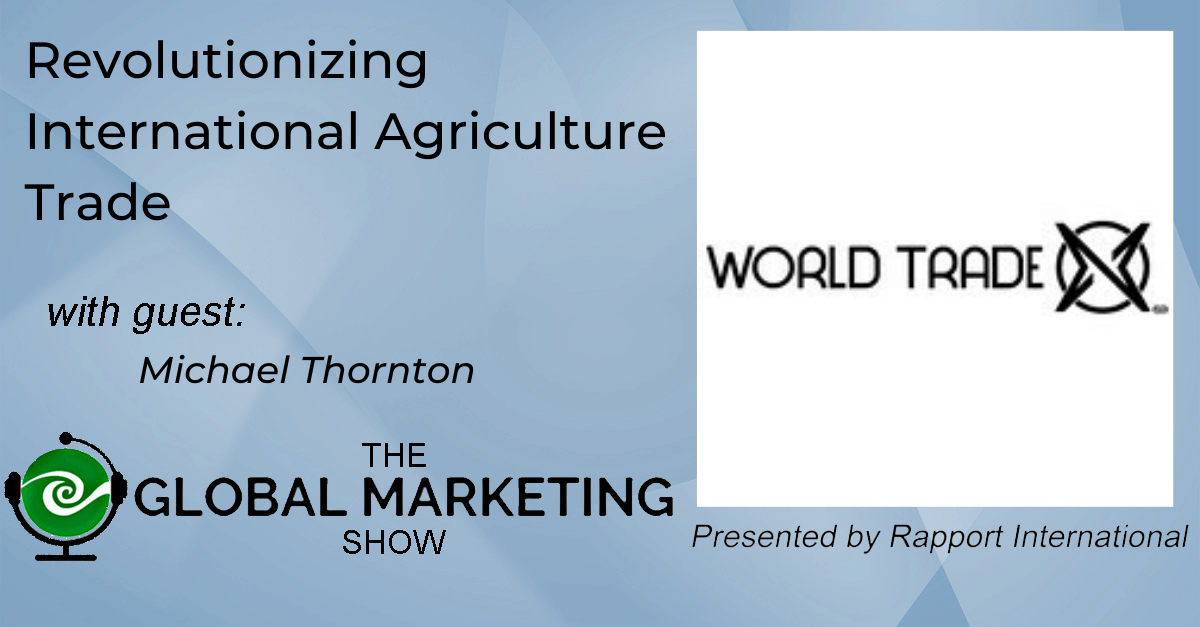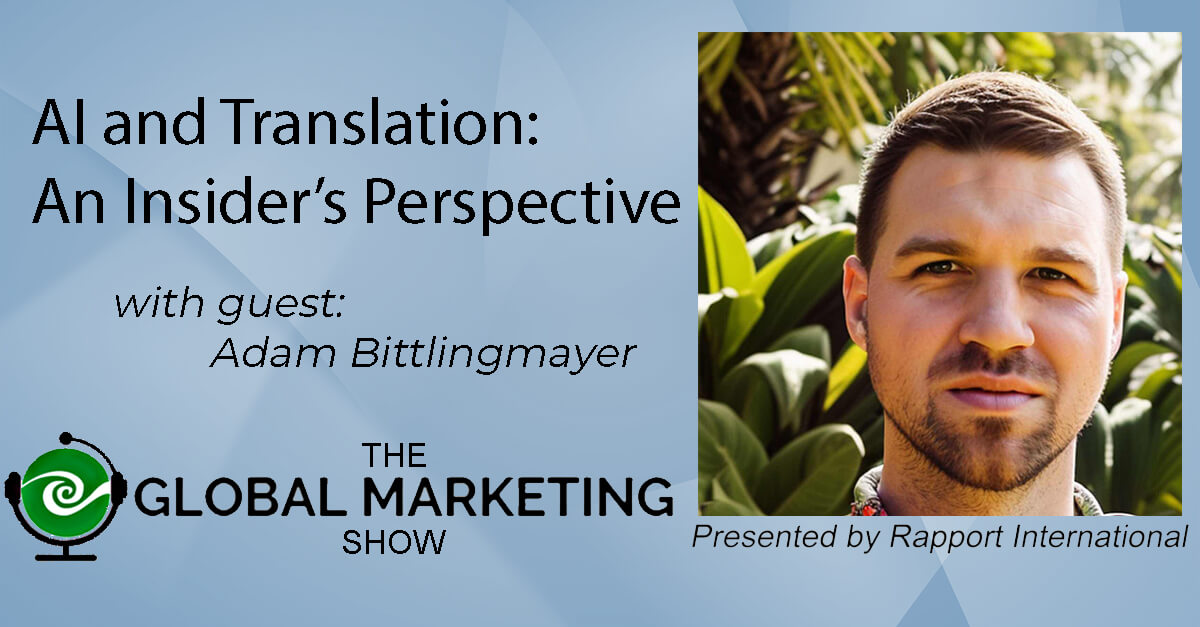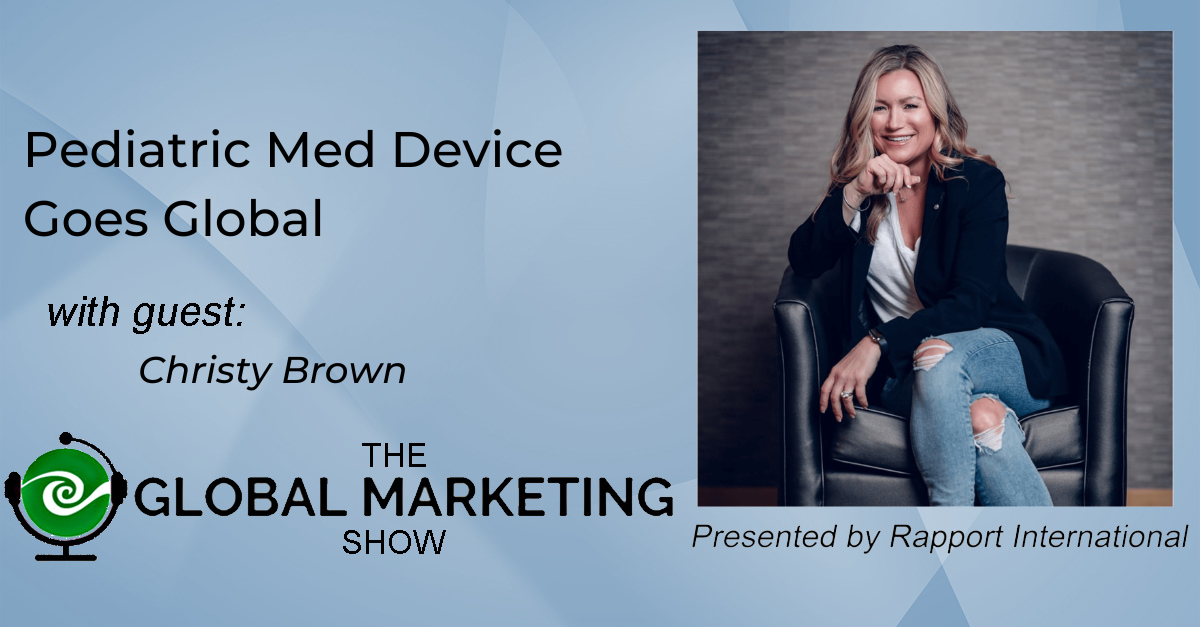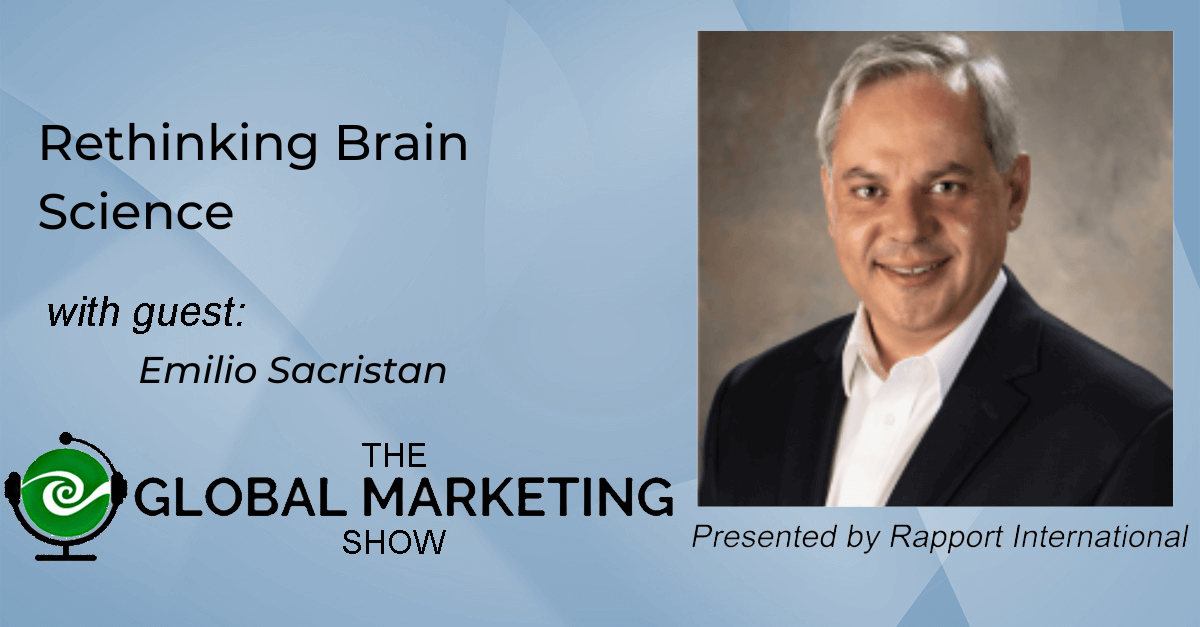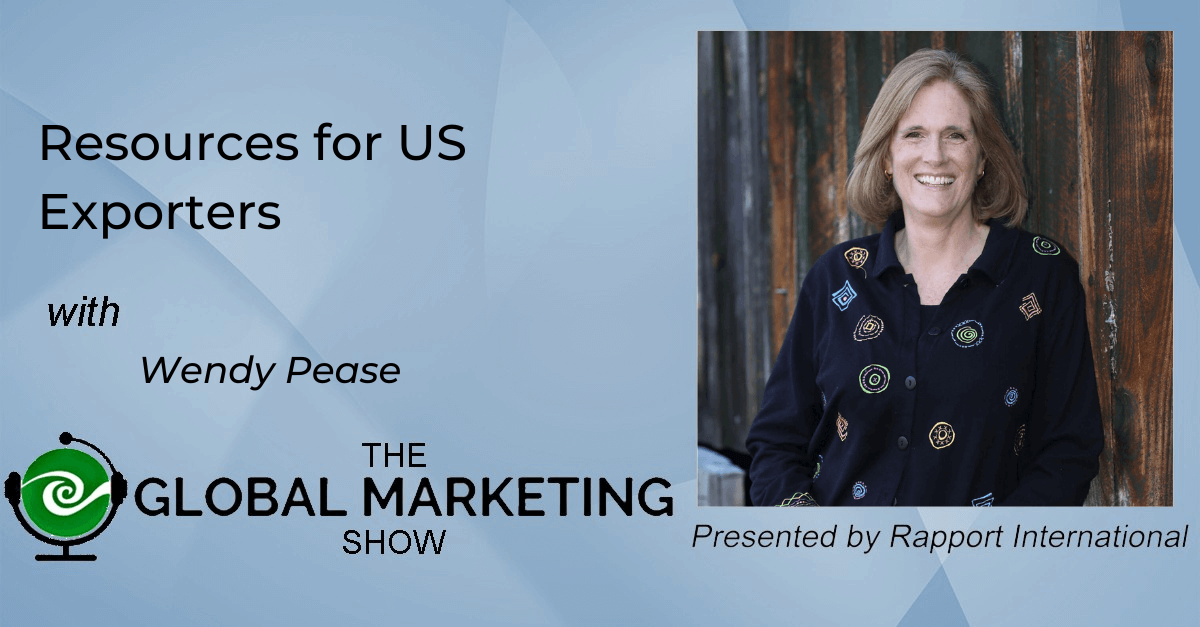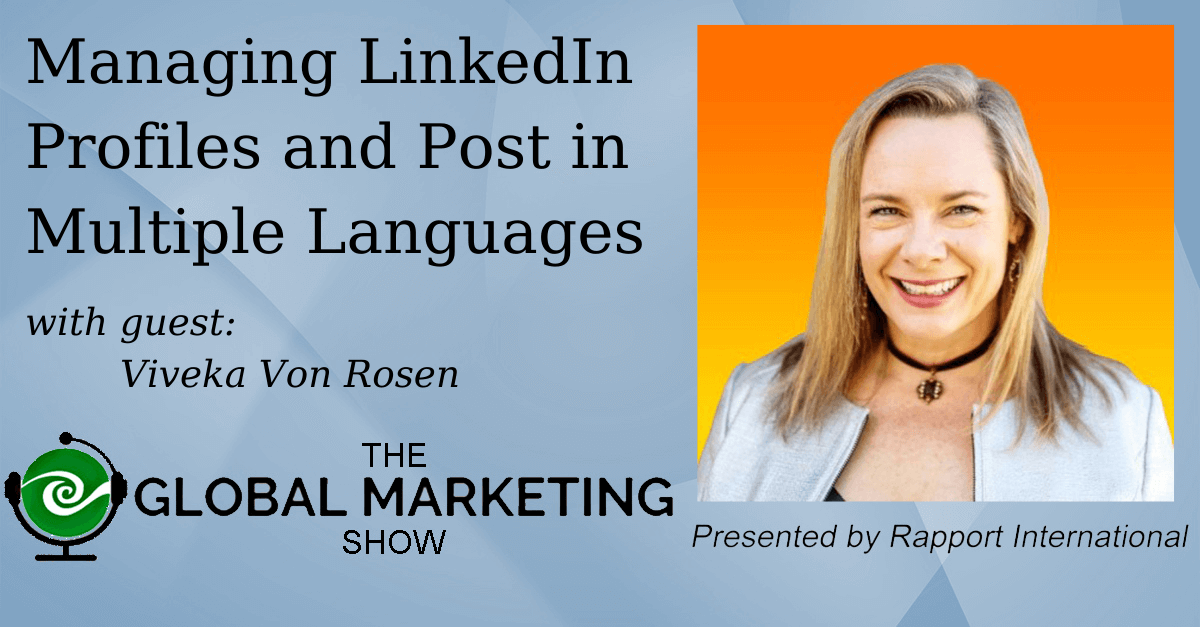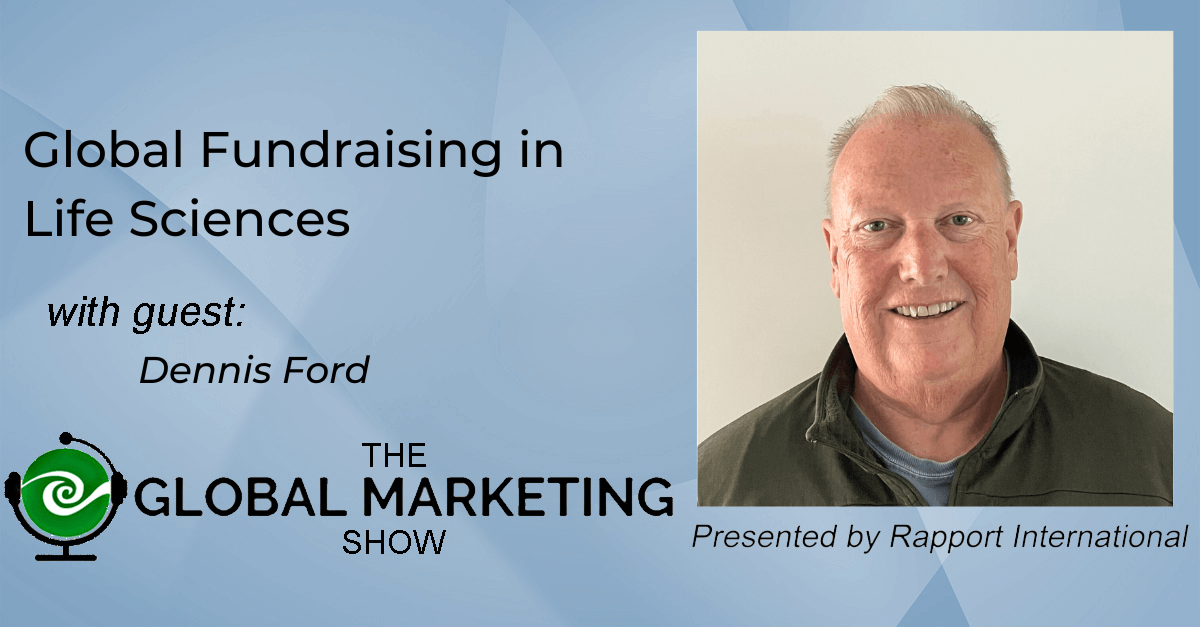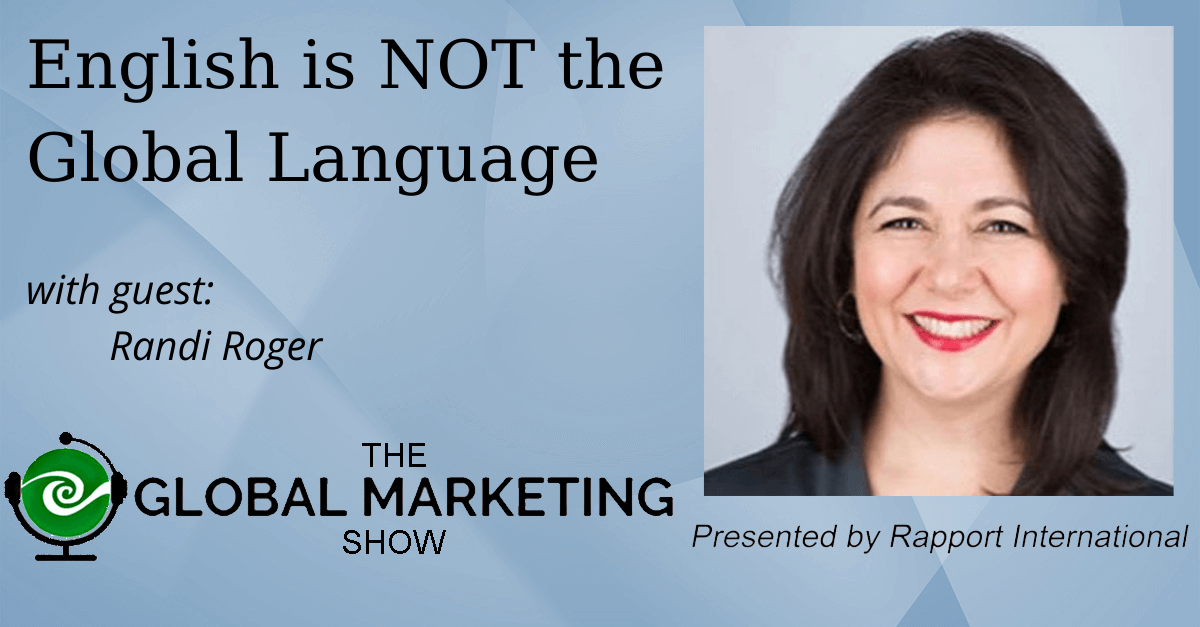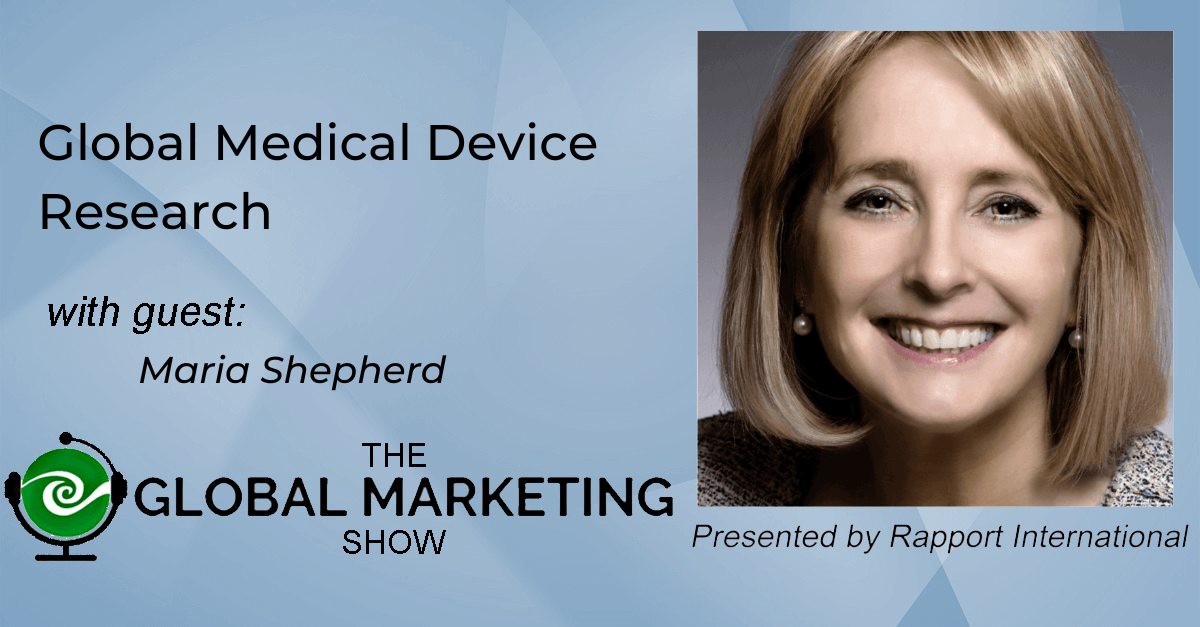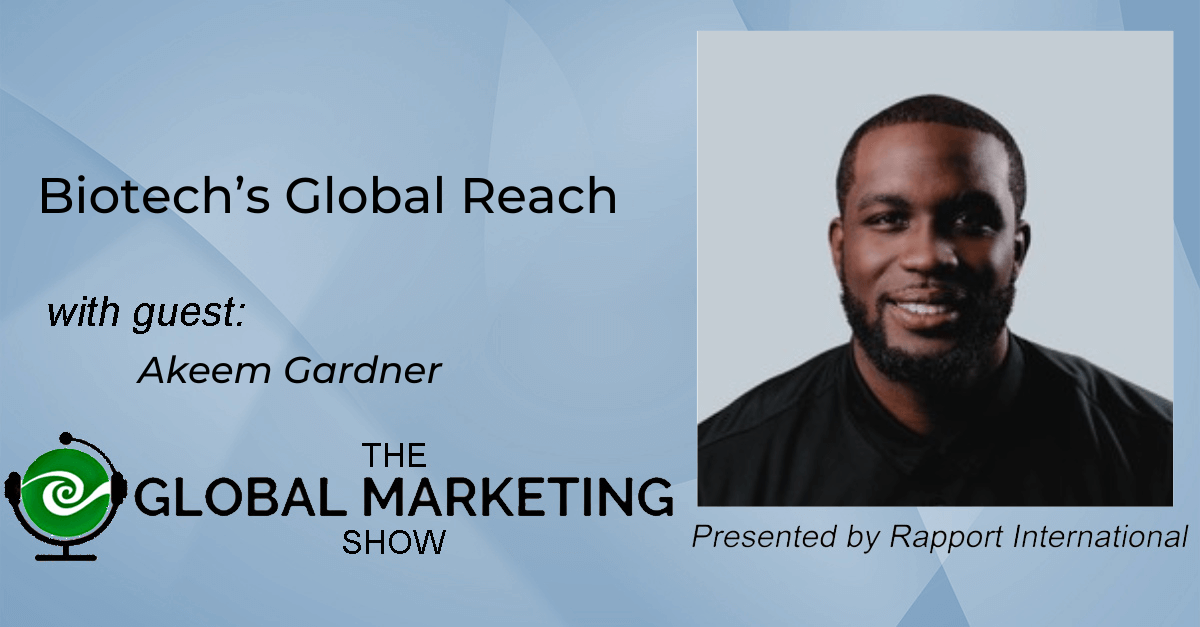Waseem Kawaf has built over 400 websites and is an expert in global user experience (UX). He’s currently the co-founder of Seicho Syndicate, where he and his partners design and develop great user experiences for their clients.
Prior to Seicho, Waseem served as Global VP of Digital Experience for Stanley Black & Decker and worked in marketing agency roles.
“Seicho” means exponential growth in Japanese, says Waseem, and his company is aptly named. When prospects and clients have good user experiences throughout their journeys, they stay longer and generate more revenue.
UX optimization can be a daunting prospect for companies of any size –Waseem suggests breaking the project up into small steps, to gain insight into your users. Pick data from the call center, chat, trade shows, or your website to analyze and build the “voice” of the customer.
The goal should be to keep every interaction “simple, connected, and frictionless,” he advises. “And rather than starting UX strategy meetings with brainstorming, try an ‘Outside-In’ philosophy instead, which works from the customer’s perspective and gives clear direction for your initial moves, an important lesson he learned while earning an MBA from MIT.
Throughout his career, Waseem has worked in the global arena. That broad experience made it clear to him that companies must consider local markets – not all users around the world consume information, interact, or buy the same way. By taking a collaborative approach rather than an authoritative one, teams can take all users into account. It may take longer but will lead to greater success.
And in the end, the Pareto principal will apply – 80% of the work can be globalized and 20% localized. The Stanley Black & Decker team created content in English and then translated any material deemed important or helpful into local languages.
Waseem’s best advice: “Stay hungry and humble. Develop your emotional intelligence, stay curious, and respect the ‘Power of WE.’ Consider yourself the stirrer in a lovely drink – by bringing all the different tastes and flavors together, you create a magical experience.”
Links:
Website: https://seichosyndicate.com/
LinkedIn: https://www.linkedin.com/in/kawaf/
Connect with Wendy: https://www.linkedin.com/in/wendypease/
Music: Fiddle-De-Dee by Shane Ivers - https://www.silvermansound.com
ATTENTION: Below is a machine-generated transcription of the podcast. Yes, here at Rapport International we talk a lot about how machine translation lacks quality. Here you see an example of what a machine can do in your own language. This transcription is provided as a gist and to give time indicators to find a topic of interest.
Wendy: Hi friends and listeners of The Global Marketing Show. Thank you for coming back to another episode. I'm smiling because we're recording this in January. We got dumped on with the snow near Boston and it's been so long. I just am enjoying it. And as you know, the podcast is brought to you by Rapport International.
So one of their tidbits is about [00:01:00] smiling and laughing. And did you know that the smile is the only internationally recognized gesture of happiness and friendship? But sometimes you can misinterpret a smile because people in Malaysia may smile or laugh in situations where Westerners consider it inappropriate, like when they're embarrassed or shy or bitter or loss of face.
So Malaysian businessmen may laugh at the most serious part of a business meeting, but it may be expression, not frivolity I could say the word. So, I thought that was a good one just because it's, you know, smile and laughter. It's good to bring the year in with that. And so I think we're going to have a lot of smiles and laughter today in this episode because we've got somebody really interesting coming on, Waseem Kawaf is founder at the Seichō Syndicate where they deliver global enterprise digital experiences. So we'll learn more about what [00:02:00] that is. And prior to this, he led the global digital experience at Stanley Black & Decker. So Waseem, welcome to the show.
Waseem Kawaf: Pleasure to be here, Wendy. Thank you so much for the kind invite.
Excited.
Wendy: All right. I get to see your smile and laughter because we're recording this on a video call. Yeah. So I got a question for you. When you're doing all the global digital experience, a lot of that goes through the website. And when we talked before, we talked about ownership of the website.
Who should own the website for a company?
Waseem Kawaf: So that's a great question, and one that I might have a somewhat controversial take on so a lot of people say, okay, marketing communications should own the site because it's your front doorstep to a lot of your customer acquisition and a lot of your brand loyalty and so forth, right?
However, if you look at a lot of why people come to a website, it comes with a [00:03:00] lot of varied intent. Right. So when we think about it and you look at it and you say to yourself, okay, there are needs around service. There are needs around support. There are product needs. There are competitive questions.
So it really should be a cross collaboration council that's owning the site. That really touches every part of your work. And one of the toughest challenges that I continuously see for organizations is not to make it a virtual brochure, but actually have it meet the expectations and the needs of the perspective and existing customer base.
And those journeys are very different.
Wendy: Okay, so there's so much to dig in there. You said a council should own it. So representatives from where, and then how did you do that when it was also a global site?
Waseem Kawaf: So what we tried to do there is when we put in chat, we put in chat about six plus years ago at this point, and the [00:04:00] idea was to drive more leads and more sales.
And we started with our healthcare brand, so we thought we might have 10 or 15 chats a week. We were generating hundreds a week. And we soon realized that the website is not what we think it was, meaning a lot of people are coming in, not just with sales intent, but a lot of service support product intent, where they're looking for their needs to be met.
We quickly started to pivot and understand that we need to involve people from product. We need to involve people from service and support and get their buy in and get their content, and even potentially get them seats on for chat. So we could start to really understand and fulfill their needs in real time.
That only accelerated with COVID. With COVID, we saw such a shift and such a pressure on our digital channels because the in person channels [00:05:00] were stripped to the studs. So that created more of a need for your digital properties to fill the gaps and to be holistic as opposed to trying to sell or trying to fulfill a single need, but trying to fulfill the omni needs of your customer base.
Wendy: How did you do that across languages?
Waseem Kawaf: So cross languages, I'm not going to say that there's a one size fits all, and I think that's one of the paradigms that kind of ends up getting you in a lot of trouble, right? Is whether you're taking a western approach or an eastern approach, you have to localize to that country's needs, to that country's offerings, with those country's teams, and the customer preferences of that country.
So there's not a one-size-fits-all for the digital experience. It's understanding the journeys and how the customers and how the prospects are different and working with those local teams to create those experiences in the local languages . And every team kind of has its strong [00:06:00] forte.
Wendy: Let me just take you back to chat and maybe you're talking about chat alone, but you've got this chat and you're pulling people in from all over the organization, but then you're getting questions and requests from all over the world.
Or did you really localize the website?
Waseem Kawaf: So we localize those websites. We localize those websites. So that's the important thing too, is you got to keep it relevant. And you got to keep it guided to the correct experiences. So one-size-fits-all, it's everyone unhappy in my experience, right?
So you can't force people onto a PDF. You can't force people onto a content download. You have to fit with their needs as opposed to your organizational needs. And I think what chat does, and what the omni channel approach does, is it forces silo breakdowns. Because as teams form and merge, you get KPIs, and you have [00:07:00] things going about it.
So you could take the same customer, and now we're forcing them to do 15 different things. As opposed to, hey look, this is one customer. And doesn't matter if they're each service, support, product, and different endpoints, you have to create that one view and make it simple, connected, and frictionless, which were kind of the pillars and the tenets that we lived off of.
Wendy: Okay, so say that again. It was simple, connected,
Waseem Kawaf: and frictionless.
Wendy: And frictionless. So can you break down each of those and and the challenges you have in that?
Waseem Kawaf: Simple meaning even a five year old could do it, right? It didn't require a lot of tech competency. It didn't require a lot of prior knowledge. If you wanted to do a service request, it's got to be clear and done. Let's use that service example again and say it connected. It should connect with the systems that are reaching out to the end teams, right? So if I put in a request for my commercial [00:08:00] security to be serviced, I should be able to do that online. That should connect to that service team and they should be able to reach out.
Right? So that gets into the connected, right? And the frictionless is I shouldn't have to, for instance, need a set browser from 1999 or what have you. It should be what I have in the palm of my hand. I should be able to do it, right? So it's got to be frictionless, meaning. I put it in, I get the outreach, there's no issue down the line.
Wendy: Okay, and who was calling in to you? Was this more consumers or business people or you had both?
Waseem Kawaf: I mean businesses, right? So when you're talking about commercial security or you're talking about hospitals, you have a lot of different stakeholders, but you have very urgent needs, whether they're to help the patient, to help the caregiver, to help the facility maintain security.
All of that is critical, and when you're dealing with it in real time, [00:09:00] you want to make sure that there's a real time response mechanism, and that the content and the education pieces are there right away, and then if they want to escalate it, that we can get them to the right person, in a simple, connected, and frictionless way.
Wendy: Was that mantra part of Stanley Black and Decker, or how did you come up with that?
Waseem Kawaf: So it was really looking at where the best tech companies push towards. So if you look at a lot of the leading tech companies, whether it's Google or back when Uber came out, you can kind of just see how easy that experience is.
Right, how the learning curve goes down, how you're able to positively affect and influence everyone down that journey path. That was kind of the charter of the team. Because we said, hey look, we need digital enablement. We need digital experience. Okay, so what are the digital technologies? Where do we sit on the adoption of this?
Like, where do we sit on the maturity curve here? How do we move up [00:10:00] that maturity curve? And how does that drive the bottom line? But how does that also start to then drive the customer experience? Because they're all interrelated, right?
Wendy: Right. Right. I got a complex question here. A lot of angles to it.
You worked on like 400 websites before. Yep. You were in charge of the global customer experience. And you said that when you were working at Stanley Black and Decker, you really had to localize down to the market. Yeah. So it becomes very challenging for companies to run a global business and have a global brand message there, but offer localized customer experience.
Waseem Kawaf: 1000%. So it's a fair question and I wouldn't say we nailed it in every single facet. I would say what we took was simple, repetitive tasks that were high-friction, low-yield, and we started there. So you have to prioritize the use cases [00:11:00] of where you want to localize, what the impact will look like and so forth.
Because really at the end of the day, once you make the customer experience better, your bottom line improves too. And your employee effort improves because now you don't have to spend so much time on the monotonous, and that's how you can take kind of digital technology and digital experience and partner with customer experience to drive commercial growth, but also drive efficiency. We weren't trying to take the most complex use cases and automate them. That was not the goal of it. We weren't going in, but what we're trying to say is like, let's open up the voice of customer in these different countries. Let's start to understand what the different intents are, where we need to start.
And you know, you start with the basics. And then you build on the basics.
Wendy: Okay, so what were some of the basics that you identified and started?
Waseem Kawaf: So, I mean, the basics were even defining. Okay. Why are people coming to the site? Let's build out the 1st decision trees and understand why [00:12:00] they're coming to the site.
And then when they hit their friction points, let's see if in the regions, we can find anyone who's willing to be a live chat agent. And start to really build that up, or take the call logs from, let's say the UK and understand where the friction points are, and then start to say, okay, these are the areas we feel most confident that we can fix, whether it's someone calling in and going to the wrong place all the time, or being put on hold for different areas, because when you're thinking of building these digital experiences, digital experience also includes the phone, right?
Because the phone is voice over IP at this point throughout. You have call centers, you have call recordings, you have the ability to seamlessly integrate AI and machine learning to improve those experiences. So if you know someone's holding for eight minutes, just to get to a service rep, and you know that what they're looking for is [00:13:00] how to reset their password.
You can automate that and show them how to reset their password automatically without ever touching that rep and allowing that rep to focus on the more important things that are coming through. But you're also drive down the call volume or the amount of frustration that you see online around those areas.
Wendy: Okay, so again, bring it into the global. How many markets were you working across or how many languages? Let's go there instead of countries.
Waseem Kawaf: The languages, you have to take into consideration all the Nordic languages, which I believe are five, and then you had the UK English, French, Belgian French, Flemish, Spanish, Portuguese, and Canadian French.
So, the reason I
have those nuances between, let's say, Canadian French and French French and Belgian French is you can't just use the same playbook. You have to actually localize to [00:14:00] those markets and then be able to monitor those markets. But the nice thing is, let's say they are in 11 different languages. If you're using a universal governance and tagging structure, even if you don't understand those languages, but you're working with the local team, you can look back at the reports and understand where the core pain points are.
So where are there similarities and where are there differences in each country? And each country is very different.
Wendy: Tell me a little bit more about that. So if you're using universal tagging, yeah.
Waseem Kawaf: Each country had a different pain point and a different strengths. Meaning, what we saw in the US wasn't true necessarily in the UK what we saw in the UK wasn't true necessarily in France. There were definitely some commonalities but there were very unique issues, whether they're product based, or whether they're service based, or whether they're installation based, or whether they're follow up based, or onboarding based, and so you're able to dig into that.
And part of the charter was to really work with the teams [00:15:00] to address their biggest pain points. And be able to see what the ROI from doing that looks like and what the opportunity cost of not doing that looks like. So always kind of putting that financial framework as well, because what's good for the customer is good for the company.
It just needs to be really highly charted.
Wendy: Charted and measured. And then did you find that the differences were because cultural differences or like not following standard operating procedures?
Waseem Kawaf: I don't think you can ever underestimate the power of culture in driving business. It goes back to not putting that one-size-fits-all, but really listening to each region, each country, what they're looking for, why they're looking for it.
Because how does culture impact the bottom line? Well, culture impacts the way sales are done, are done, right? And it impacts the amount of steps involved, and it [00:16:00] impacts whether it's a complex sale or a simple sale. And the duration of things and how things occur. So culture is a huge part of it.
You can't disregard culture when you're doing it. But it goes back to the Buddhist expression, when the student is ready, the teacher will appear, right? So you can't force a region will force a country to adopt something that they're not bought into to begin with.
Wendy: And then how did you handle languages and communications. Did you have a general content creation or was it all created out in the field?
Waseem Kawaf: So what we would do primarily is we would have the content in English and then pass it to the teams to say, Hey, look, how much of this would work in your local language? Do you need help with the translation?
Um, we had translation services. Well, I'm ready for some of the copy versus how much do you want to customize it [00:17:00] yourself. So the team might say, hey, look, this doesn't work for my market for X, Y, and Z. Or, I don't sell this product, so this one's not going to work. But I sell this product, and this is how I'm going to use part of this content.
And I'm going to translate it, and then I'm going to show you what I have, right? It goes back to kind of the first point, Wendy. You can't be authoritative when you're leading a transformation. You have to be collaborative and open.
Wendy: Okay. And so it was American companies start with American English offer it.
People could opt in. And then I think I heard you said that if they translated it on their own, or they created something, it would have to come back to review with corporate or not?
Waseem Kawaf: It depended. It depended on what was said. It always has to go through legal and compliance regardless, whether it's in the region or whether it's global.
But, when you're dealing with things that are at that level, there's always a trust but verify sphere, especially when it comes to content and claims.
Wendy: Yeah, that's a lot. So it would go through a legal and [00:18:00] compliance review, but it wouldn't go through like a branding or messaging review.
So you could have had very different messages all over the world. Or do you think that they were pretty consistent?
Waseem Kawaf: We try to keep it as consistent as possible, with the subtle nuances between the regions, because there was different product offerings and there are different preferences and there's different things that
the teams were trying to highlight, right?
Wendy: On an earlier episode, Conitex Sonoco, they had made a bunch of acquisitions and then they had websites all over the world and product offerings all over the world and so they wanted to centralize it to one website so you get the power for visitors.
Waseem Kawaf: We started with over 80 sites, and made it into one top-level domain. But still with those regional differences and those regional areas and it doesn't come without a lot of sweat and tears and push and pull to it, right? It's not a seamless solution because it requires a lot [00:19:00] of trying to use global templates, but also trying to stay as local to that brand as possible
while maintaining the parent brand.
Wendy: Okay. So you went from 80 sites to one global one. Talk to me about the biggest problems you ran into. So if somebody is going through this problem now, they know what to do.
Waseem Kawaf: Cultural. Yeah. I mean, the way we look at it is you can always find reasons to customize the heck out of things.
And why certain regions need certain things. But at the end of the day, kind of that Pareto principle works pretty well. If it works for 80% you're in a pretty good spot. And that's the trade off, right? When you're going from 80 to 1, there's going to be some things that regions are unhappy with. Par for the course in some cases, as long as it doesn't impact the overall commercialization and their overall customer experience. And that's kind of the difficulty of it is you're trying to empower at [00:20:00] scale but inevitably some pieces of autonomy and independence around certain things have to go in order for you to be able to generate that impact.
Wendy: So tell me more about the cultural impact. Was it working with the teams or was it the challenge of not understanding the culture? Like, dig into that.
Waseem Kawaf: It was more working with the teams. I mean, been blessed in a lot of ways that every year of my working life, I've worked with Europe and Asia.
I've kind of come with an ACDC adapter built in. Um, but there are a lot of cultural differences on deadlines, on how things roll, on where things need to sit and so forth. So when you think about it, even from a, let's say a French culture versus an American culture, Americans are very much like, okay.
We're going to do the sweet talk. We're going to decide on something [00:21:00] and push it through. Whereas in France, it's all about the sparring and the competitive, like, I want to get my point. Even if we're going to go down this road, I want you to hear out everything I have to say. So there's that back and forth piece.
That if you're not accustomed to it can absolutely burn you out because you're taking it personally as opposed to culturally. That's how things sit. Tonality is key, how to make sure, you know, coming from the West, you're not talking down to any culture, because, I mean, if you look at the Nordics, it's a very flat organization. It's a very community and collaborative base. So, if you're coming in too strong, you're going to send the wrong message. So, how do we co collaborate? How do we co create? You're the hero of this. I'm just empowering you to tell your tale.
Wendy: And that's what I've heard a lot through doing the podcast is people say, stay curious and then it can take a lot longer because you're working through all these different cultural differences.
Waseem Kawaf: Oh, a thousand percent, a [00:22:00] thousand percent. I think the other piece to remember is you can't take it personally. And that's where people kind of lose their cool at the end. If you take it personally, the other side is going to take it personally and then you're not going to move towards where you both want to go.
Wendy: Right. And so it'll take longer, but then I've heard it. If you can stick it out and stay goal focused and work together and be collaborative, that the results are so much better. Yes. So you have talked about a process called outside in that really seems to get results.
Tying it into our last discussion. Can you tell me a little bit more about this outside in philosophy that you had, or I don't you call it a philosophy?
Waseem Kawaf: So it comes from Michael Schrage, who is a professor at MIT that I had, who's focused on innovation, and really how to drive innovation within companies and how to drive transformation.
And he [00:23:00] wrote a book I think of what customers want and it is really all about that outside in approach
and it's transformatively simple because really what we do is we make a lot of assumptions on what our customers want and we're in a time of unbelievable access to insights. And abilities to actually know what our customers want from our first-party channels and use those to make the experience better.
So it's a very simple concept, but it's very, very rarely applied even today within organizations. Very few organizations I see say, okay, this is what's happening across of our channels and this is how it's going to impact our product or messaging strategy. It's usually the brainstorm comes within and then goes without and then tests and validates and goes back within as opposed to learn what the customer is looking for and then build for that, then test it, then learn what they're looking for next. It's time to [00:24:00] use that as a 24/7 flag wheel for growth and acceleration.
Wendy: Right, it seems very, very basic. Start with the research as to what they want and having the conversations and then adjust from there.
Waseem Kawaf: And all enterprise companies have that ability. You have so many first-party touch points. You just need to structure and govern that data, learn from it. And then push it in motion to create a better customer experience.
I mean, a lot of times, part of it is the way we sell is antiquated, right? We realize revenue upon sale. But it's a lot easier to sell to an existing customer base than to acquire a new customer. So few people are looking at share of wallet. How well did we onboard them? What are they using? Where are they moving?
I mean, a lot of times when you talk about customer data platforms, very few companies are using customer data platforms to make predictive and prescriptive decisions around what they should do next. So you see the tech in a lot of places, but you don't see the [00:25:00] implementation, the people process to get you to that customer first approach.
Wendy: How does a company start doing that?
Waseem Kawaf: Start simple. Start with one platform that you have. Whether it's your call center or your website or a tactic like chat, even at a trade show, being able to actually sit down with the people coming in with your customers and your prospects and start to really build that voice of customer whistle, because without that, you're flying blind.
And unless you're Steve Jobs, good luck, right? Because there aren't a lot of Oracles of Delphi out there, so you can take the cheat code, which is actually learning from your customers and your prospective customers, as opposed to supposing what they would want.
Wendy: Okay, right. It's as easy as that. It's just looking and doing the analysis and then starting some brainstorm with.
This is our straw wars that [00:26:00] we've developed off of these conversation. Now when you're doing something like that, how are you looking at the global data?
Waseem Kawaf: So it's really working with the global teams on what they're trying to achieve. And where they sit on, I always call it a maturity model, but where do they sit in their evolution? Are they in the nascent stages? Are they in intermediate stages? Are they in the latter stages? What are they pinning?
What's their goals and aims and ambitions? What are they pinning their hopes on? Versus what's actually where they're at. And then once you know what the goals are you then start back of the napkin working with them to get to that point. So here are the things you need to do to get to that point, right?
If you want to drive a 15% growth in, recurring monthly revenue, you probably need to upsell your current customer base by 30%. Okay. What's that going to take? What tactics? What channels? [00:27:00] Where do we start to build? And then you kind of build the business case from those goals.
Wendy: Okay. So what I was wondering about when you were working at Stanley Black and Decker, here you've got all these individual regions and you've got to roll it up to the company goal. Did you start with corporate or would you start in the local regions, build the goal, and then it would feed out?
Waseem Kawaf: But you start in the local regions that have the most hockey stick ability, right? Because not all regions are weighted the same. And so if you can get a win in a big market, that now drives other wins across the board, right? So, for better or worse, this world still works across ROI and financials and commercial cases.
So even when you're thinking about something as creative as digital experiences, it's still got a ladder back to the commercial finance aspects of the business. And if it doesn't, it doesn't have a long runway.
Wendy: Okay. Oh, my [00:28:00] gosh. I could just keep asking you questions on this and keep trying to tie it back into the global.
So this is so interesting to me. You've spent every year on international. You've worked on 400 websites. You are an expert on customer experience. What would be your words of advice for somebody trying to build out global customer experience?
Waseem Kawaf: I'd say stay hungry and humble.
That's key. The moment you're arrogant in any sphere, you lose credibility, but you also lose your North Star. In order to work internationally, or to really do a transformation that is either local or global, you need a tremendous amount of emotional intelligence, you need that curiosity and that discovery, and you need to understand the power of we, so it's not about what you bring to the table, it's about being the straw that mixes the drink.
Right, and I think that if I had to [00:29:00] tell my younger self one thing, it's understand the value of the straw.
Wendy: Great advice. You know, I never thought about the straw that mixes the drink, but it's pulling all the flavors and all the goodness together and making something that's so amazing. Huh. Well said. All right, now I got another good question for you that everybody knows is coming. What's your favorite foreign word?
Waseem Kawaf: So I've got two. One because we're called the Seichō Syndicate, and seichō means exponential growth in Japanese, so I think that's pretty cool. So we fuel that exponential growth. But the other is a Spanish saying, which I think rings truer every day, which is el mundo es un pañuelo, which basically means the world is a handkerchief.
Um, and that might sound really confusing, but just think of you have this gigantic world, but it's really the size of a handkerchief because everyone's interconnected and from corner to corner, you can meet [00:30:00] everyone. And that's what you find later in life as you strike up a discussion anywhere.
And as you get older and as you meet more people, you're going to find a commonality, or you're going to find a common connection, or you're going to find something that draws you together. I think in this divided world, it's a nice thing to think about, right, is we're actually way more similar than we are different.
Wendy: That's fantastic. I love it. Yeah, Seichō. I wanted to go back to the name of your company is S E I C H O, Seichō Syndicate. So I was curious about where that came from. So that's good. And where can people find you and why should they? Well, first answer, why should they reach out to you and where can they find you?
Waseem Kawaf: So they can find me on LinkedIn. That's probably the easiest spot. I think I'm forward slash Kawaf, right at LinkedIn. Or they can spell it out. K A W A F They can find us on the Seichō syndicate. [00:31:00] com and that's for everything from product evaluation, product market fit, positioning, branding to a lot of the stuff we talked about today, a digital experience to the customer experience and really how to build out AI and machine learning.
So two other partners that I'll give a shout out to Michelle Martinez, who built the customer experience at HomeServe and then did the post purchase at Wayfair and Sean Johnson, who has worn so many different hats from agency owner to fashion designer to the former Head of product and UX at Discovery.
So, it's nice to have smarter people to also work with and learn from. So every day is a wonderful journey.
Wendy: That's fantastic. Yeah. You've got some powerhouse brains and experience working there. Okay, so we'll put the link to your LinkedIn in the show notes. So just so just in case somebody's listening and trying to write it down, it's backslash K A W A F to find him on [00:32:00] LinkedIn and then Waseem's company is Seichō Syndicate, S E I C H O syndicate. com. So thank you so much for being on here today, Waseem.
Waseem Kawaf: Thank you, my friend. And, uh, look forward to breaking bread soon. Thanks again.
Wendy: I hope so. So listeners, thank you so much for listening.
If you know anybody that's in customer experience, this is a massively growing field that links in all the different departments and how the customers go through, you know, the attract, engage and delight flywheel from HubSpot. So pass this on to them and introduce them to Waseem.
And make sure you give it a five-star rating and tune back in for next time. Thank you so much again. Bye bye. [00:33:00]
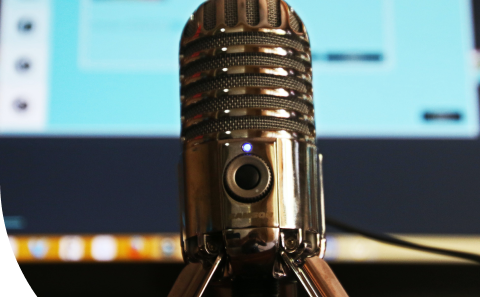
Are you a global marketing professional with stories to share?
Popular Posts
Popular industry news, interviews, technologies, and resources.
